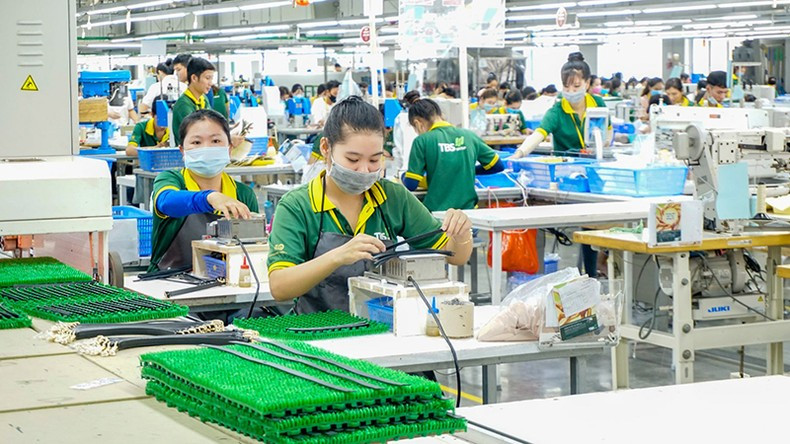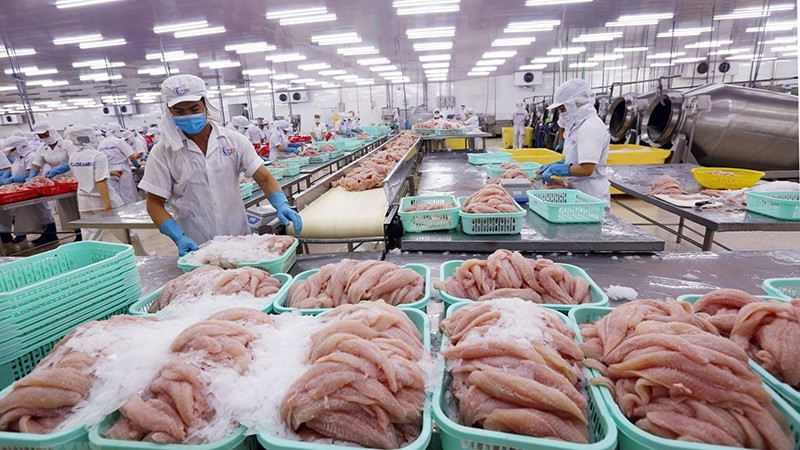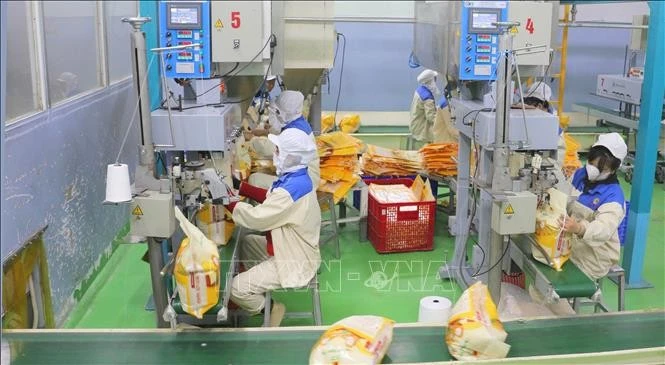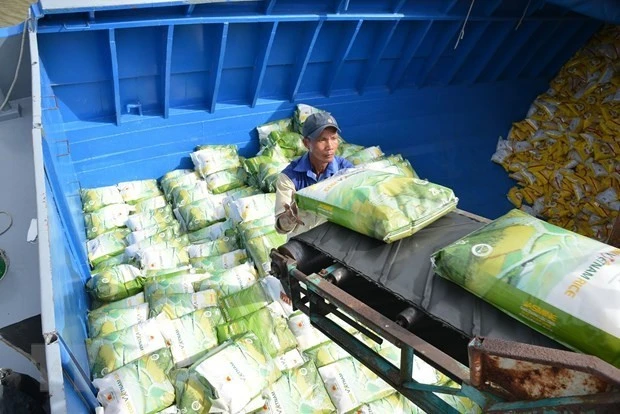What is the reason for the record surplus?
According to statistics of the Ministry of Industry and Trade, Vietnam’s trade balance in April continued to have a trade surplus of about 1.51 billion USD, raising the trade surplus in the first four months of 2023 to 6.35 billion USD (last year was 2.35 billion USD).
This is a record trade surplus of the 4 months so far and is one of the bright spots of the economy in the first months of this year, in the context of unexpectedly decelerating GDP growth and declining disbursement of foreign investment inflows, compared to the same period.
The large trade surplus in the first four months of this year contributed to limiting the deceleration of economic growth, as well as supporting the foreign exchange market more, thanks to the abundant foreign currency supply. The fact that the dong has tended to appreciate against the US dollar since the beginning of the year is the clearest proof. However, the trade surplus of the past four months has many worrying problems.
Firstly, statistics from the Ministry of Industry and Trade showed that the total import and export revenue in the first four months of this year decreased by 13.6%, compared to the same period last year, reaching only 210.8 billion USD (while the same period last year increased by 16.6%). April alone was estimated at 53.57 billion USD, down 7.7% over the previous month and down 18.8% over the same period last year.
Regarding commodity exports, difficulties in production and a decrease in export orders in the first quarter of 2023, continued to affect commodity exports in April 2023. The export revenue of goods in April 2023 was estimated at 27.54 billion USD, down 7.3% over the previous month and down 17.1% over the same period last year.
Thus, difficulties in the world market have strongly affected the export activities of Vietnam, making it difficult to sell goods abroad. In the context of inflation causing markets to tighten spending, it is expected that exports will continue to face difficulties in the coming time.
On the side of key products, General Secretary of the Vietnam Association of Seafood Exporters and Producers (VASEP) Truong Dinh Hoe, said that inflation had a heavy impact on the world market, causing the demand to import seafood to be more difficult. Production was affected by a decline right from the first quarter of 2023. The disruption of the global food supply chain, especially the economic downturn, is penetrating the lives of many countries around the world, causing the consumption of seafood products to be at risk of decreasing in 2023.
Secondly, in the opposite direction, the import revenue of goods in April 2023 was estimated at 26.03 billion USD, down 8.1% compared to the previous month. Generally, in the first four months of 2023, import revenue of goods was estimated at 102.22 billion USD, down 15.4% over the same period last year. Import turnover of enterprises has all decreased. This is expected to affect the source of export goods in the near future.
Regarding the structure of imported goods, accounting for 86% of Vietnam's total import revenue in the first four months of 2023 is the group of goods that need to be imported (raw materials and accessories for domestic production), with an estimated turnover of 88 billion USD, down by 18% over the same period in 2022, due to difficulties in export orders. Besides, the production and business activities of enterprises are also difficult, so the need to import raw materials and accessories to serve production decreased.
Thus, the record trade surplus of the past four months was attributed to both export and import revenue decreasing, of which imports fell deeply. This will cause many potential difficulties with import and export activities in the near future.
Strengthening the promotion of goods exports
The general difficulties of the world economy and the demand for imported goods of countries in the world are forecasted to continue, possibly even more severe in the coming time. This puts great pressure on the realisation of the target that the total import and export turnover in 2023 will grow by about 6% compared to 2022.
 |
| Exporting enterprises determine to diversify products. |
A series of solutions to exploit output bottlenecks for production and export have been taken into account by the Industry and Trade sector. In particular, the Ministry of Industry and Trade is determined to focus on innovating and strengthening trade promotion activities towards new and potential markets such as India, Africa, the Middle East, Latin America, and Eastern Europe, and markets less affected by inflation and having positive growth (ASEAN).
In addition, it is necessary to drastically break into new markets where the middle class is growing, such as E7 emerging markets (China, India, Turkey, Russia, Mexico and Indonesia; and the Halal market (the Middle East, Malaysia, Brunei).
The Ministry of Industry and Trade is intensifying negotiations to sign new free trade agreements (FTAs) to expand export and import markets. Accordingly, the Vietnam-Israel FTA has concluded negotiations and is expected to be signed in 2023. The Comprehensive Economic Partnership Agreement between Vietnam and the United Arab Emirates has been initiated; FTAs with MERCOSUR countries (including Brazil, Argentina, Uruguay, and Paraguay) are also being promoted. When these FTAs are signed, it will open up opportunities not only for exporting goods but also for importing goods, with lower and more competitive tax rates.
According to Nguyen Thi Tuyet Mai, Deputy General Secretary of the Vietnam Textile and Apparel Association (VITAS), although there are still many difficulties, recently, the number of partners from Europe, Northeast Asia, Southeast Asia tends to increase rapidly compared to previous months, especially for the office fashion segment. Therefore, it is expected that export volume in the second half of the year will increase compared to the beginning of the year.
The textile and garment industry has determined to promote many solutions such as digital transformation, and green production (domestic and environmentally friendly raw materials), to meet the requirements of partners; diversify markets and product categories.
Many experts believe that Vietnam is gradually losing its advantage in cheap labour, so it is imperative that businesses quickly apply digital technology and invest in machinery to develop, reduce human resources, and improve competitiveness.



![[Video] Seven inspection teams formed to stabilise market during peak Tet period](https://en-cdn.nhandan.vn/images/9f233ae74386156ace55673ec5a8ea373e7bb5df2274800bfd51bda6ec86d9464d289201deda54c246314a974e2f0aef0bc69929884e4c53fd4eb6a1f98b468f6ae70becd9f49b834a8b9195e077c25b/anhminhhoavideo-110126-2.jpg.webp)












